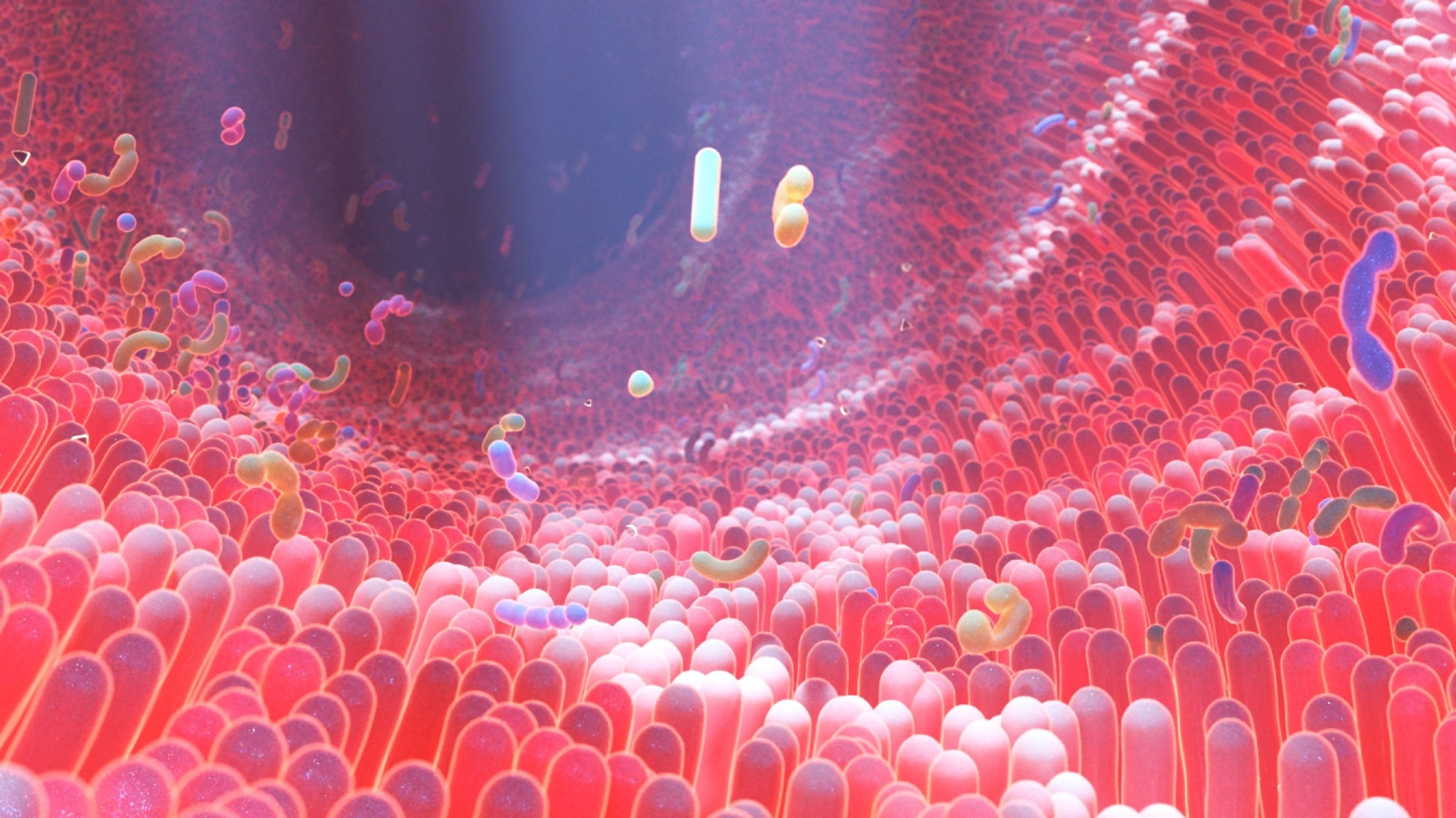In a recent study published in the journal Molecular Metabolism, researchers investigated the impact of environmental and genetic disruptions of the circadian rhythms on the peripheral circadian clock synchronization and microbiome oscillations in the gastrointestinal tract.
 Study: Original Article Genetic and environmental circadian disruption induce weight gain through changes in the gut microbiome. Image Credit: Alpha Tauri 3D Graphics / Shutterstock
Study: Original Article Genetic and environmental circadian disruption induce weight gain through changes in the gut microbiome. Image Credit: Alpha Tauri 3D Graphics / Shutterstock
Background
The central circadian clock in the suprachiasmatic nuclei (SCN) of the hypothalamus is known to regulate sleep and other rhythmic activity and modulate humoral and neuronal signals that synchronize the peripheral circadian clocks to adapt to changes in the environment. In addition, various organs have peripheral clocks, essentially clock genes that regulate physiological activity through tissue-specific clock-controlled genes.
Disruptions in the central clock due to internal and external time mismatches, such as from jet lag or working night shifts, cause desynchronization between the various peripheral clocks, which is thought to alter the overall metabolism. Studies have found correlations between disruptions in the circadian rhythm and metabolic disorders such as diabetes and obesity. Furthermore, associations have also been observed between circadian disruptions and alterations in gut microbiome composition and rhythms. However, the role of central and peripheral circadian clock disruption and subsequent gut microbiome imbalances in metabolic disorders remains unclear.
About the study
In the present study, the researchers determined clock gene expression in various gastrointestinal tissues using quantitative real-time polymerase chain reaction (qRT-PCR) in different mice models.
Genetic circadian disruptions were explored using mice with the SCN-specific brain and muscle Arnt-like protein-1 (Bmal1) knockout (Bmal1SCNfl/-), while wild-type mice subjected to stimulated shift work (SSW) were used to test environmental circadian disruptions. All mice were on a schedule of 12 hours of light and 12 hours of darkness. The SSW group mice were then subject to shifted light and darkness schedules and jet lag schedules, while the Bmal1SCNfl/- mice were moved to constant darkness for different periods.
Activity profiles were calculated based on running wheel activity. A food intake monitor was used to determine feeding profiles, and fecal samples were analyzed to evaluate energy assimilation efficiency. The fecal samples were also analyzed for bile acid and short-chain fatty acid composition.
Nuclear magnetic resonance (NMR) measurements determined the fat, free fluid, and lean mass composition of the body. Tissue and blood samples from the sacrificed mice were then used to measure gut permeability, triglyceride, and plasma glucose levels. High-throughput sequencing of the 16S ribosomal ribonucleic acid (rRNA) and classification of enzymatic genes was conducted to determine microbiome composition and functionality.
Gene expression of a panel of genes including Bmal1, circadian period 2 (Per2), nuclear receptor subfamily 1 group D member 1 (NR1D1 or Rev-erbα), and D Site Of albumin promoter binding protein (Dbp) was determined using qRT-PCR. Germ-free microbiome transfers from circadian clock-disrupted mice to wild-type mice were also conducted to understand the impact of the altered microbiome on physiological function.
Results
The results reported desynchronization of peripheral circadian clocks in gastrointestinal tissues and microbiome arrhythmicity from genetic and environmental circadian disruption models. Alternations were observed especially in microbial taxa involved in lipid and sugar metabolism and short-chain fatty acid fermentation.
In the Bmal1SCNfl/- mice, arrhythmicity of the microbiome was associated with adiposity, disruption of glucose homeostasis, and weight gain. Similarly, the SSW mice displayed an increase in body weight and plasma glucose levels associated with disrupting microbiome oscillation patterns.
Furthermore, Bmal1SCNfl/- mice displayed disrupted food intake rhythms when shifted to constant darkness, while the food intake patterns in SSW mice continued to be rhythmic but were phase-shifted. The authors believe that the loss of microbiome rhythms in both circadian disruption groups could be due to either a change in feeding behavior, loss of synchrony among gastrointestinal peripheral clocks, or both.
The Bmal1SCNfl/- mice displayed a more severe loss of microbiome rhythmicity, with microbial diversity changes on family and phylum levels. However, a few taxa notably maintained the rhythmicity, which could be attributed to altered but functional peripheral clocks or other intrinsic factors in the bacteria.
The transfer experiments indicated gastrointestinal homeostasis disruption and body weight gain in wild-type mice colonized with arrhythmic microbiomes from clock-disrupted mice. The wild-type mice also exhibited altered gene expression of CCGs and peripheral clock genes.
Conclusions
Overall, the results suggested that the genetic or environmental disruption of central circadian clocks and the subsequent peripheral gastrointestinal clock asynchronization are strongly associated with gut microbiome arrhythmicity and functional changes resulting in metabolic abnormalities.
The study highlights the role of circadian rhythm-disrupting lifestyles in developing metabolic disorders such as obesity and diabetes and emphasizes the importance of microbiome rhythms in metabolic health.
Journal reference:
- Altaha, B., Heddes, M., Pilorz, V., Niu, Y., Gorbunova, E., Gigl, M., Kleigrewe, K., Oster, H., Haller, D., & Kiessling, S. (2022). Genetic and environmental circadian disruption induce weight gain through changes in the gut microbiome. Molecular Metabolism, 101628. https://doi.org/10.1016/j.molmet.2022.101628, https://www.sciencedirect.com/science/article/pii/S2212877822001971